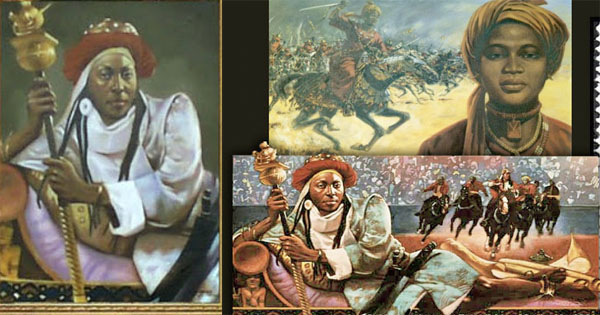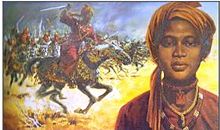Queen Amina

More than ever, significant women rulers and warriors have been revered for the many impactful roles played in building a truly African identity beyond societal limitations. Amongst the few historic in Nigeria, a prominent warrior queen, Amina enjoyed a truly lasting reputation. Amina has been praised in traditional Hausa songs as being most capable to demonstrate strength and charisma as a man as well as being able to lead men to war. Extensively, the memory of Amina assumed legendary proportions in her native land and beyond. On today’s Saturday Small Chops, we shine the spotlight on the legacies and achievements of Queen Amina.
Amina was a vibrant warrior of Zazzau, the present-day city of Zaria in Kaduna State, where she ruled successfully in the mid-sixteenth century. Growing up elegantly in court, and receiving vital instructions on both political and military matters, Amina’s outstanding leadership prowess was soon noticed, as oral history have it that she was named Magajiya (heir apparent), and given forty male slaves (kuyanga) at an early age of 16.
During the reign of her brother, Karami Amina distinguished herself as a leading warrior and gained wide recognition for her military skills. However, after his death, Amina became the queen of Zazzau. Before assuming the throne, Zazzau was one of the original seven Hausa States and the largest of them all. It was also the major source of slaves sold by Arab merchants.

Just three months after ascending the throne, Amina waged a 34-year campaign against her neighbours to expand Zazzau territory. With an army consisting of 20,000 well-trained foot soldiers and 1,000 cavalry troops, Amina conquered a large expanse of land beyond Kwararafa and Nupe. For identification and protection, the legendary queen had her cities surrounded by a 15-kilometre earthen wall, which later became well known across the country as Amina’s Wall. As a result, she has received accolades from historians for originating the Hausa practice of building military encampments behind fortress walls. In addition to receiving credit for ordering the construction of the distinctive series of ancient Hausa protective walls, Amina was known to have introduced the cultivation of kola nut in the area.
Read Also: Orompoto, the First and Only Female Alaafin of Oyo
Amina led wars successfully, taking over lands such that the men of Katsina and Kano paid homage to her. Known as the warrior queen, she expanded the territory of the Hausa people to the largest borders in history. Beyond expanding the Zazzau territory, she created trade routes across Northern Africa.
Amina has enjoyed a lasting legendary reputation as a female leader and warrior. Even in contemporary times, the extent of her impact is beyond impressive. She has been honoured, immortalized and sits at the centre of modern cultural depictions.
The Queen Amina statue at the National Arts Theatre in Lagos State for example is a win to her name, while multiple educational institutions and residents have been named after her. Amina is the protagonist of the historical fantasy novel; Queen of Zazzau, written in 2018 by J.S Emuakpor and the inspiration behind the character Malika in the graphic novel Malika: Warrior Queen, written in 2017 by Roye Okupe. Even after centuries, her exploits became the model for a television series about a fictional warrior princess named Xena.
Similarly, more recent oral tradition has modelled a series of lively stories about this queen and these have found their way into popular modern culture.
Found this interesting? Please tell us about a notable female ruler from your tribe.
